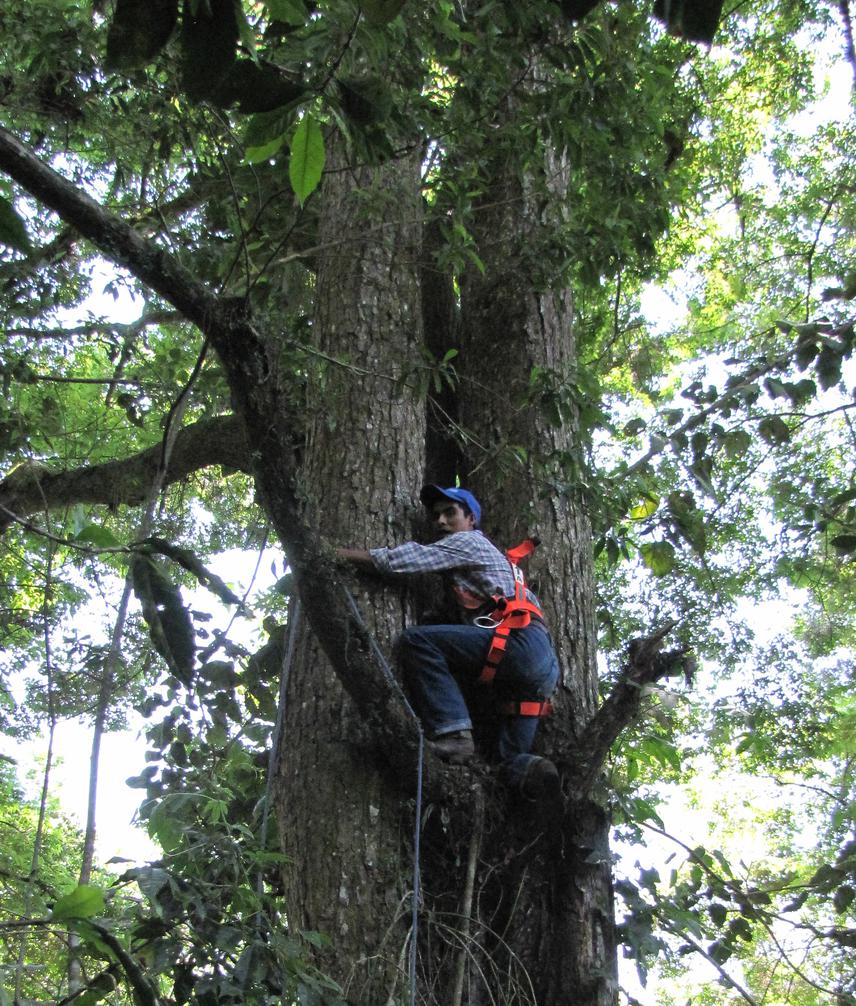Tarin Toledo Aceves
The main goal of the project is to develop cloud forest restoration strategies in partnership with local communities in order to contribute to biodiversity conservation and forest recovery, taking into account global climate change scenarios.

Martin collecting seeds from Ulmus.
Cloud forests (CF) are a global conservation priority because they host exceptional concentrations of biodiversity but are severely threatened by deforestation and global climate change. Many CF tree species are currently listed as threatened and have become locally rare. In Mexico, 60% of CF tree species have been reported as threatened. Since both the seedling and sapling stages have a very strong influence on forest dynamics, the reintroduction of key tree seedling and juvenile species could be a viable strategy by which to accelerate CF recovery. Typically, CF are located in zones affected frequently by clouds at vegetation height. Changes in the altitude at which cloud condensation occurs and increased evapotranspiration as a result of global warming would reduce the area directly exposed to cloud. There are concerns about the potential migration and adaptation rates of many tree species, which may not be able to keep pace with projected global warming.
Given the predicted consequences of climate change scenarios for CF, forest restoration must consider the past, current as well as future distributions of key tree species. Changes in altitude are associated to reduce temperatures, reduction of relative humidity and changes in patterns of fog deposition. There is a vast literature demonstrating that tree seedling survival and growth are strongly affected by changes in light, temperature and humidity.
Evaluation of seedling establishment in response to different climatic conditions associated with an altitudinal gradient will allow us to identify species-specific responses to predicted scenarios of climate change and to determine the potential of threatened species for use in CF restoration efforts. The study will provide CF restoration recommendations for use in federal environmental policy and local communities based on analysis of the performance of 10 key tree species across an altitudinal gradient in Central Veracruz, Mexico. The main outcomes of this project include: propagation of threatened tree species, thus contributing to their conservation, and education and training for the local communities will increase awareness of the value of CF biodiversity and act to strengthen their responsibility in the maintenance of these extremely valuable forests.